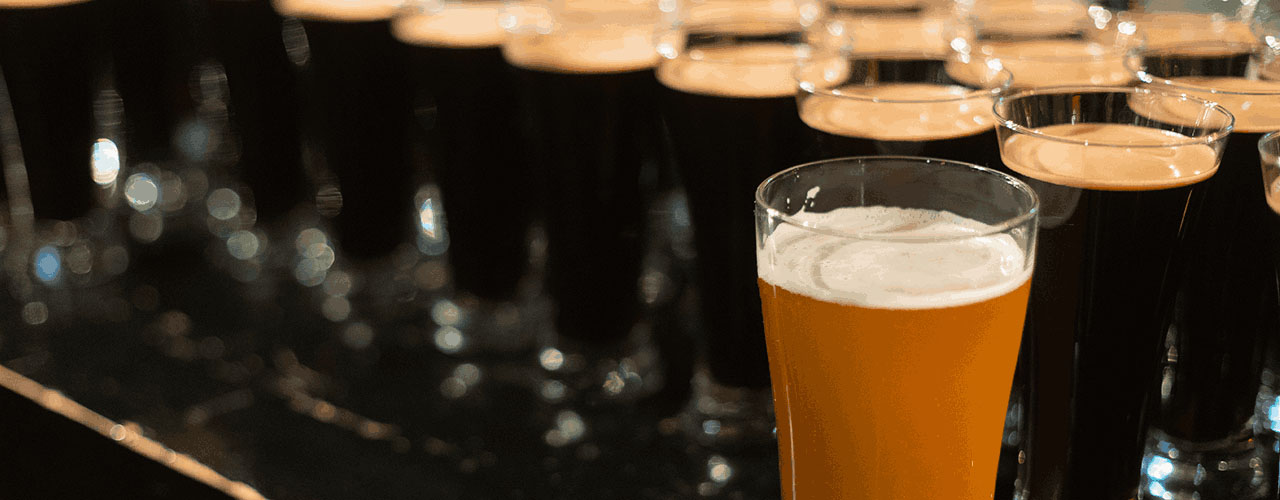Last week, we published an article on how to troubleshoot the common off-flavours in your beer. In that post, we covered the common flavour faults that can occur in your brews. In today’s post, we discuss other related brewing concepts that will help you brew better.
Beer Flavour is an Incredibly Complex Subject
Take the case of Hops. Hops alone have over 500 flavour compounds, all of which undergo complex transformations during fermentation, brewing, and ageing. Adding to this are the flavours of malts, yeasts, adjuncts and even the water you use for brewing.
The result – you have a complex cocktail of endless aromas and tastes.
Not to forget – the perception of beer flavours. A flavour that appeals to you may not be your friend’s cup of tea and vice versa. Studies indicate that the human tongue is capable of distinguishing over a trillion different flavours.
All this makes fine-tuning beer flavours a complex and highly challenging endeavour. But, then brewers like us love a challenge, ain’t we? Here, in today’s post, we show you the science behind beer flavours so that you can easily spot off-flavours.
Flaws in Recipe Design
When there is an imbalance in the ingredients used it causes an off flavour. Here are some of the common recipe flaws that could lead to unwanted flavours in your brew.
- Malt-Hop Balance
Malt is the main ingredient that is responsible for the body and sweetness of your beer. Hops, on the other hand, add to the bitterness. You need to ensure that malts and hops are balanced. This balance varies from one style of beer to another. For instance, an IPA is bitterer compared to English ales and a Pilsner. Using brewing software to calculate the bitterness ratio, gravity points, and IBU will help you get the malt-hop balance right.
- Colour and Clarity
The colour and clarity are two main elements that are critical in delivering a high-quality beer. Use the Morey Equation to determine the final colour of your beer accurately. Finings and general good brewing techniques will ensure that the clarity of your beer is appropriate to the style.
- Carbonation
Just like colour and clarity, achieving the perfect carbonation is essential. The right levels of carbonation help in improving the perception of body and flavour. A flat beer or over-carbonation can ruin even the best of beer styles.
- Ingredient and Flavour Selection
Using the wrong combination of ingredients or choosing the wrong proportions can lead to off-flavours in your brew. One of the common mistakes made by beginner brewers is using too many conflicting ingredients. For instance, using speciality malts, caramel, and roasted malts all in the same brew can lead to flavours that don’t go well together.
Alternatively, you may be using the wrong ingredients for a particular beer style. When selecting ingredients for brewing don’t sacrifice simplicity. Make sure that each ingredient you use serves a specific purpose and don’t add ingredients just because they sound exotic or fancy.
- Brewing Techniques
The technique you use plays a crucial role in determining the body, flavour, and appearance of your brews. Using the right techniques along with the right recipe and the right ingredients is the way to perfect-tasting beers. With that said, the opposite is also true. A wrong technique even when you have the right ingredients and the right recipe could lead to disasters.
These are the main elements that impact the flavour of your brew.
Off-Flavour Terms that You Should Know
| Off-Flavour | Distinguishing Aroma |
| Acetaldehyde | Smells like Green apple |
| Alcoholic | Smells like Heavy alcohol |
| Astringent | Smells like Dry bitter, husky, and grainy (similar to sucking a tea bag) |
| Di-acetyl | Smells like Toffee, buttered popcorn, butterscotch, and buttery |
| DMS (Dimethyl Sulphide) | Smells like Creamy corn |
| Estery | Smells like Floral and fruity notes like roses, pears, etc. |
| Grassy | Smells like Freshly mowed lawn and fresh cut grass |
| Skunky | Smells like a dirty skunk |
| Metallic | Smells like Blood, tinny, iron, copper, etc. |
| Musty | Musty, stale and mouldy |
| Oxidised | Smells like Wine, sherry, stale, paper and cardboard |
| Phenolic | Smells like Medical band-aid, plastic, smoke and spicy |
| Solvent | Smells like Paint thinner, lacquer thinner |
| Acidic/Sour | Vinegar like, and sour, tart and lactic flavours |
| Sulphur | Smells like rotten eggs, burning matches |
| Vegetal | Smells like rotten vegetables – canned or cooked |
| Yeasty | Smells like yeast giving off a bready and suphury aroma |
Why Should You Learn to Recognise Off-Flavours?
As a brewer, you need to master basic recipe design concepts and techniques, while identifying off-flavours so that you can improve your brewing skills over time. To become a better brewer, there are two factors to focus on:
- Become a Better Beer Evaluator
Start by using every opportunity that comes your way to critically analyze different brews – both yours and beers by others. Whenever possible, go out on a beer tasting with experienced brewers. This helps you form opinions while listening to the opinions and preferences of others. Only when you evaluate beers without any prejudices, you can work on identifying off-flavours and improving them.
- Brew your Recipes more than Once
You have created a new, innovative beer recipe. Before you make it commercially available, try recreating the brew more than once. After each time you brew it, critically evaluate it. Identify improvements that can be made and note changes that you take to make it better. Only by repeatedly crafting a recipe, you can perfect it. You can overcome your flaws and get rid of off-flavours.
Becoming a Better Brewer
The first step in becoming a better brewer is being able to identify what’s wrong with your own beer. You need to spot the off-flavours and flaws in your brews, to improve your output. As mentioned above, try to critically evaluate your beer, and if you’ve got difficulties with that, enlist the help of other fellow brewers to help you out.
And, remember that for high-quality brews, you need the best beer plant design in India. For the best brewing equipment in India, reach out to our experienced team. Right from helping you choose the best beer plant machinery cost in India for your specific needs. Installing and setting the brewing equipment, we help you every step of the process.






